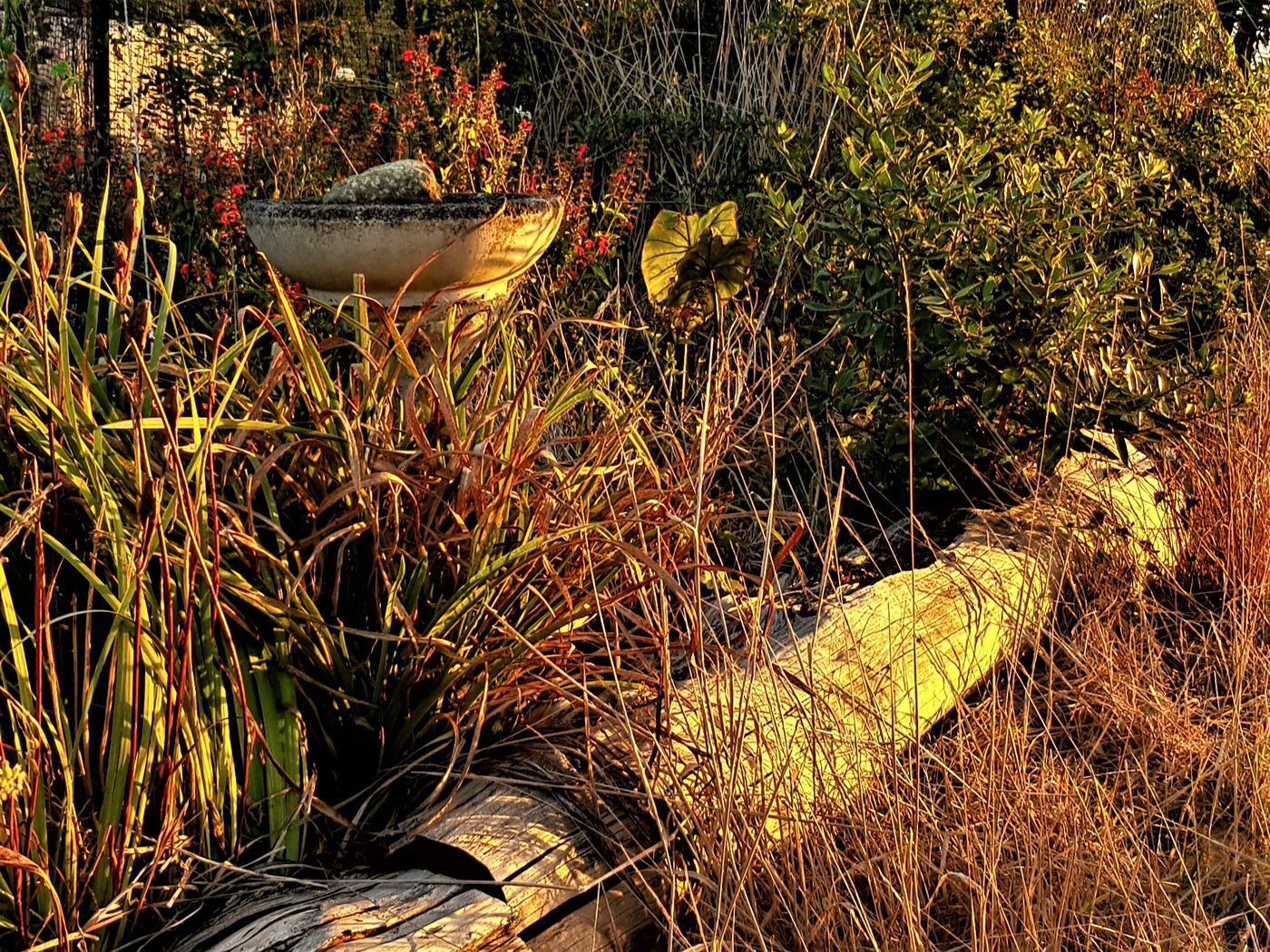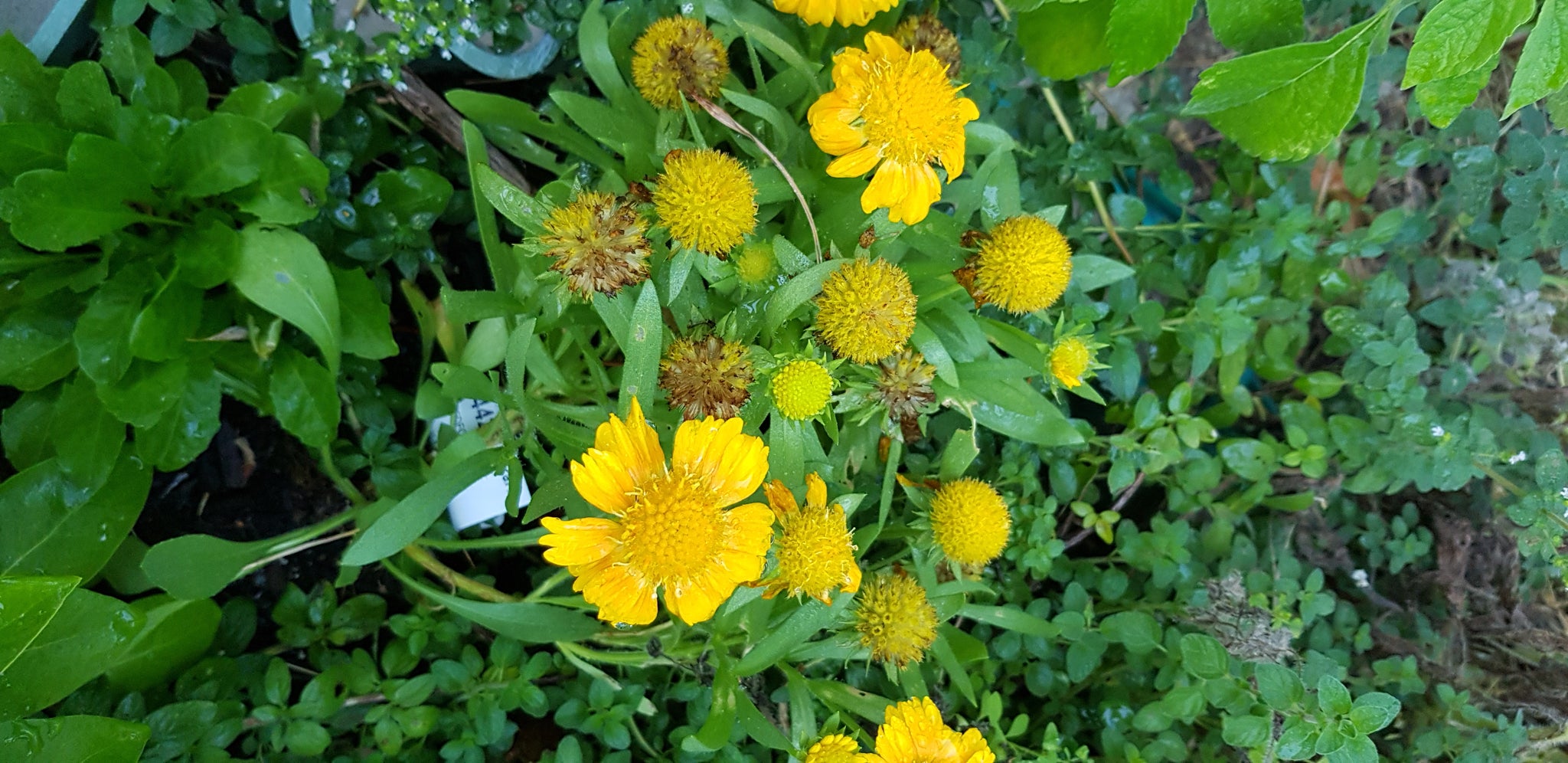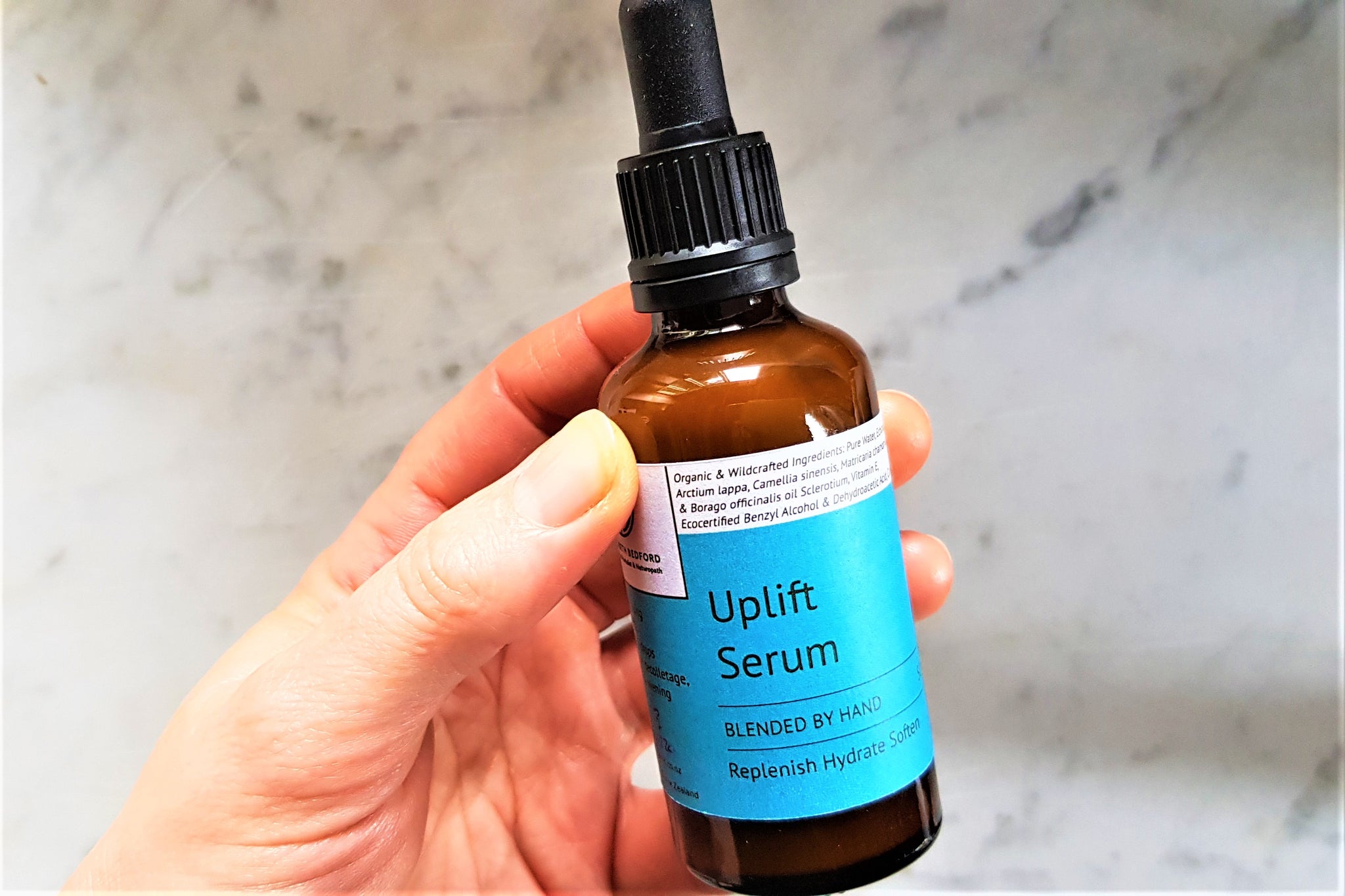
Working alongside, not against, permeates my teaching, gardening and client work. Achieving life, diversity and potent medicine on this depleted land has more challenges than one…
The land here has no natural water source, other than rainfall, and is buffeted by 360 degree winds. Developing the herb beds in the most sustainable way, alongside vibrant plant health, is a multi-step process.
1/ Work with what we had:
When we moved here, our first big step was to reroof the buildings – to remove contaminant sources such as lead nails, potentially lead paint and rusted out iron - and to install filters to remove pathogens. Many people imagine rainwater to be pure and natural. Well, it is, but it’s naturally full of bird and animal excrement, bacteria, and other debris from the roof. Sometimes, windborne chemicals too.
So water leaving the tanks passes through fine sediment, carbon and UV processing before use.
2/ Increase capacity
The next step was to install more tanks, in the spring of 2020. This increased our water carrying capacity to 100K litres. Yes, we used plastic, rather than concrete or earth – I know some people would question that, knowing how plastic leaches endocrine disruptors, and, of course, contributes to waste. Firstly, we’re privileged to be in a place to afford tanks, earthworks and plumbing, but not quite so much we could afford concrete or clay. Secondly, concrete tanks might have been transportable to our site. Thirdly, concrete has drawbacks too – it’s not a clearcut situation.
At this point, we felt pretty confident that we could ride out 4 months without rain.
What happened? It rained enough to fill the tanks and more…but it didn’t quite rain enough that winter to restore the moisture deficit of the first summer, so the water table shrank. Everything became a bit more dependent on being watered.
We got through the summer of 21 fine though…and started planting trees for shelter and soil protection in Winter 21. Once again, the rain didn’t quite replace the deficit…so the dryness in the soil became deeper. Life decreased – you can’t have thriving microbial and insect life in dust.
And then…it stopped raining when Summer started. The new trees need water through summer - every plant has needed support. Even the more established trees are suffering – we won’t know til Spring how many didn’t actually survive.
We hand watered for nearly 6 months, using up a lot of time and energy – also mental energy, constantly trying to decide how much water to sustain life, but create enough stress to develop resilience rather than dependence.
We had a few showers through Autumn, but nothing significant, just enough to turn it into a green drought.
Autumn was put on hold:
Compost doesn’t break down.
Mulch can’t be spread – it’s too dry underneath.
Kikuyu can’t be uprooted – ground is too dry ( Kikuyu is a C4 plant, meaning it has an alternative energy pathway which gives it the ability to thrive in drought)
Autumn crops didn’t go in, as we didn’t have watering capacity.
Seeding reclaimed soils couldn’t happen – without rain, no life.
BUT: 5 months after it stopped, we’ve had some rain. Not enough to break the drought, but enough to restore the tanks a bit. Capacity is acceptable, for values of sustainability
3/ Build resilience from the ground up - making for moonlit planting sessions...
The catch 22 here is that we need more growth to develop moisture retention and build resilience…but that growth needs water until it can support itself…
We are planting the most exposed sites, with most potential to reduce wind impacts over the site. Wind increases a plant’s energy requirements, slowing growth and development, and pulls moisture out.
The herb beds are being built on a carbon base to slowly break down – no lush growth wanted, just steady soil evolution
There is a no bare soil policy – bare soil is exposed and eroded.

4/ Build resilience into the future
I waited a year to plant anything in quantity, looking at how different areas worked for different plants. Now, I’m focussing on what works for these seasons:
Dry crops such as Ashwaghanda, Thyme, Goldenrod and Salvias
Spring crops such as Matricaria, Calendula, Roses, Nettle, Melissa.
Endurance crops such as Dandelion, Comfrey, Plantain.
I am keeping the woodland and loam herbs, in the experimental stage, especially the American and Chinese ones – the Scullcaps, Marshmallow, Valerian and Elecampane are still finding their feet.

5/ minimal input, maximum health
I only want herbs that are vibrant and potent, growing full of the constituents I want due to optimal site and environment. However…the soil is still, overall, depleted and low in resources. Without inputs, it has limited capacity to support optimal herb development.
This means they get minimal inputs, developing their strength through interaction with their environment, not relying on external boosts. The herb beds started now will are built with gypsum to support clay breakup, lime to support the pH of a predominantly clay base, some wood ash for a trace of potash, and one initial spray with an EM product to provide a starting point for biological and nutrient balance.
Later, they may get a seaweed spray, which will bring much needed nutrients, and they will have mulch added – ideally, some that the hens have helped create, with a touch of manure in it. But the last thing I want is lush rich growth – that creates a vegetable, not a medicinal herb. Growing at their own pace, they’ll be stronger.
Working with the environment in a true regenerative sense means integrating with the natural systems, and accepting that they change and evolve, not necessarily for our advantage.


